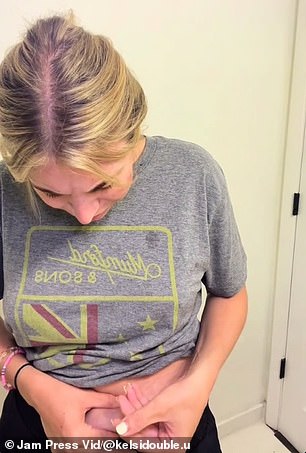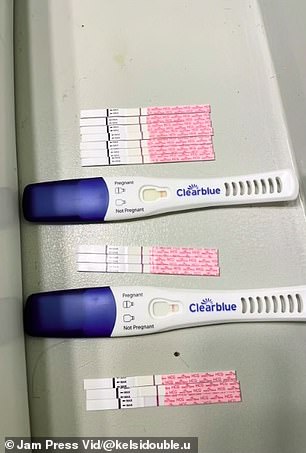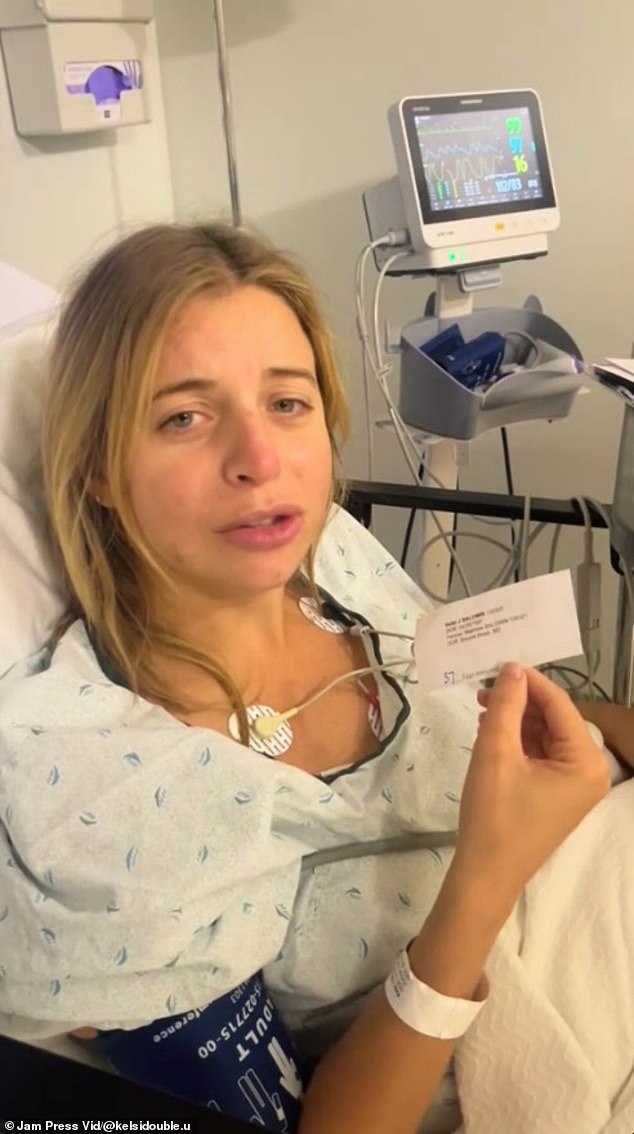An Ohio woman who thought she had a tumor in her uterus actually had a much more “shocking” condition.
Kelsi Baldwin, 33, and her husband Matt had been struggling to conceive for six years when they were scheduled for a scan in 2023 to get to the bottom of the problem.
That’s when doctors noticed what looked like a basketball-sized tumor in Mrs. Baldwin’s uterus, raising concerns that cancer could be to blame.
However, further testing revealed that the apparent lump was actually a second, much smaller uterus, a defect she had since birth but was completely unaware of.
That’s when she and her husband started connecting the dots. The disease, which affects one in every 2,000 women, makes conception difficult and explains her extremely heavy periods: she had two uteruses bleeding each month.
Kelsi Baldwin, 33, from Ohio, was diagnosed with uterine didelphys, a condition that affects three in 1,000 and led her to develop two uteruses and cervix.

Mrs Baldwin and her husband Matt (pictured) had struggled for six years to get pregnant. Doctors believe that uterine didelphys may have caused this infertility
Mrs Baldwin, now 33, said: ‘It was a shock and learning experience for both me and my husband.
‘At first I felt very embarrassed and didn’t want to tell anyone I had it. I felt alone – I couldn’t find many others like me and there wasn’t much information I could find on the internet about it.’
Normally, when a woman’s uterus forms in the uterus, it begins as two tubes that join together to form the organ.
But in those with a double uterus, known medically as uterine didelphys, the ducts do not join. Instead, each duct creates its own uterus.
It is not clear why this happens.
Baldwin also has two cervixes, which are canals that connect the uterus to the vagina. She still only has one vagina.
She said: “It affects the ability of the sperm to meet the egg, depending on which side you ovulate, which I don’t know (in advance).”
Infertility problems could be because one of the uteruses may be smaller than average, leaving less room for the fetus to develop properly.
Complex anatomy can also make it difficult to successfully implant an embryo.
Aside from infertility, her only symptom was extremely heavy periods that led to her “bleeding through her tampons.”
Doctors believe Mrs Baldwin’s condition is probably the reason she has had difficulty getting pregnant.


Mrs Baldwin has undergone multiple fertility treatments as a result of her illness, including injections (left) and IVF.

Mrs Baldwin, pictured here at a fertility appointment, is now focused on sharing her story to help other patients with uterine didelphys and infertility.
According to the Cleveland Clinic, people with a double uterus are at higher risk for miscarriages, premature births, cesarean sections, low birth weight, growth restriction, and babies born in a breech position (when the baby’s feet or buttocks are first). the uterus, which can be dangerous and make childbirth difficult.
The smaller size of the uterus can force the fetus into uncomfortable positions, making early delivery or cesarean delivery necessary to avoid birth injuries.
In addition to two miscarriages, Ms. Baldwin has undergone multiple rounds of fertility treatments such as intrauterine insemination (IUI), which involves inserting sperm directly into the uterus to increase the chances of pregnancy.
“We are currently doing IVF so we can transfer the embryo to the right (larger) uterus in the hope of successful implantation,” Mrs Baldwin said.
You will also need to have two regular Pap tests, which take samples of cervical tissue to check for cancer.
After her diagnosis last winter, Ms. Baldwin is focused on sharing her story to help other patients with uterine didelphys and infertility.
She said: “It’s important for me to share my story so others don’t feel so alone.”
“I want there to be as many resources and information for other people who are diagnosed with this abnormality and who are struggling with it or struggling to conceive.”

